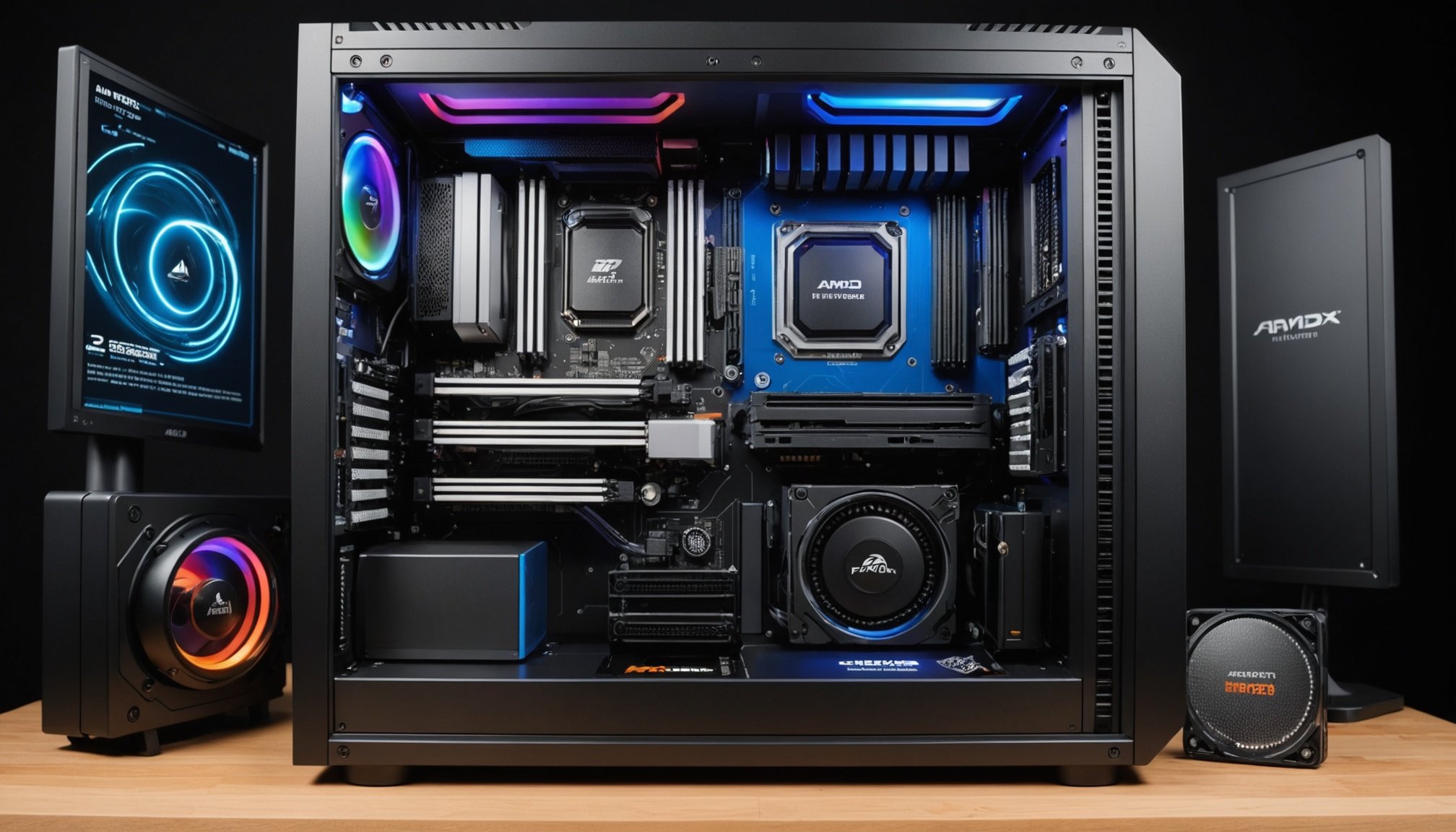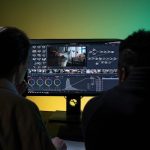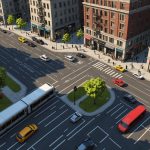Overview of 3D Rendering Workstations
In the demanding world of 3D rendering, possessing a powerful workstation is crucial to achieving high-quality results efficiently. These workstations are specifically designed to handle intensive computational tasks and deliver impressive performance. For professionals engaged in industries that rely on 3D rendering, such as architecture, film, and gaming, selecting the right workstation essentials is pivotal.
When building a 3D rendering workstation, understanding the performance requirements is essential. Key specifications to consider include processing power, memory capacity, and graphics capabilities. A robust CPU with multiple cores can efficiently manage complex calculations, significantly enhancing rendering speed. In conjunction, a high-performance GPU is indispensable for rendering intricate graphics and textures.
The rise of industries utilizing 3D rendering, such as architecture and game development, makes it increasingly important to have a workstation tailored to specific needs. Software like Autodesk Maya or Blender demands resources that general-purpose computers often cannot handle. Hence, a workstation with optimal specifications becomes an investment rather than an expense.
In summary, for those tackling 3D rendering tasks, a bespoke workstation equipped with high-performance components can drastically improve both productivity and final output quality.
In parallel : Mastering RAID 5 on Synology DS920+: Step-by-Step Configuration and Performance Boost Guide
Understanding the AMD Threadripper 3960X
The AMD Threadripper 3960X stands out as a formidable choice for 3D rendering tasks due to its impressive CPU performance and advanced architecture. This processor boasts 24 cores and 48 threads, offering a significant advantage over its predecessors and many competing CPUs. These specifications enable it to handle multiple complex calculations simultaneously, drastically reducing rendering times—a critical factor for professionals in 3D rendering.
Compared to earlier Threadripper generations, the 3960X features enhancements in architecture that improve efficiency and throughput. It is built on a 7nm process technology, which optimizes power consumption while delivering superior computing capabilities. This leap in technology results in faster performance and increased reliability, particularly for applications that require intensive processing.
The Threadripper 3960X’s compatibility with PCIe 4.0 provides additional benefits, allowing for faster data transfer rates and improved connectivity with other critical components like GPUs and memory storage. These features collectively position the 3960X as a top contender for those seeking to build a high-performance 3D rendering workstation. By selecting this CPU, users can ensure they harness cutting-edge technology that meets the rigorous demands of contemporary rendering tasks efficiently.
Selecting Compatible Hardware Components
Creating a powerful workstation for 3D rendering demands meticulous selection of hardware components. Compatibility between these components is key to ensuring seamless operation and maximized performance.
Choosing the Right GPU
A high-performance GPU is imperative for 3D rendering, offering accelerated processing of complex graphics. When deciding, consider models by NVIDIA or AMD that specialise in rendering tasks. It’s crucial to match your chosen GPU with your workstation’s power supply and motherboard to avoid compatibility issues.
Optimal RAM Configuration
The RAM capacity and speed significantly impact your rendering speed. For most 3D rendering tasks, a minimum of 32GB RAM is recommended, while higher-end projects might require 64GB or more. Opt for RAM with high frequencies to ensure your CPU can perform efficiently without bottlenecks.
Storage Solutions
Choosing between HDD and SSD storage is vital for overall workflow. SSDs, though pricier, offer superior speeds, reducing loading times and data retrieval during rendering. Implementing a combination—using an SSD for active projects and an HDD for storage—can balance speed and cost effectively.
Select components with a clear understanding of your specific workstation requirements to build a robust system capable of tackling any 3D rendering challenge.
Step-by-Step Build Guide for Your Workstation
Building a 3D rendering workstation can be a rewarding process if approached with the right build guide. Start by gathering the essential tools: screwdrivers, anti-static wristbands, and cable ties are crucial for both assembly and safety. Before you begin, ensure you have a dedicated, static-free workspace.
Assembly Process
Begin the assembly by installing the CPU, such as the AMD Threadripper 3960X, onto the motherboard. Secure it properly to avoid damaging the pins. Next, place the RAM sticks in the appropriate slots, ensuring they are fully clicked into place. Install your chosen GPU, checking its compatibility with both the motherboard and power supply.
Position your motherboard within the case, aligning it with the standoff screws. This ensures that it remains stable while connecting other components. Connect all necessary cables, paying attention to the power connections for both the CPU and GPU.
Tips for Cable Management
Effective cable management not only enhances airflow but also prevents overheating. Use cable ties to bundle wires together and keep them out of critical airflow paths. Leave slack in cables for easy dismantling, should you need to upgrade or replace parts in the future. This careful planning keeps the workstation neat and optimises performance.
Performance Benchmarks and Testing
Performance benchmarks are essential for analysing the efficiency of a 3D rendering workstation. They provide insights into how well the workstation manages intensive tasks under various conditions. Tools like Cinebench and Blender’s own rendering tests help conduct these benchmarks. These tests evaluate aspects like CPU performance, allowing users to understand the capacity of their setup.
For instance, a workstation using the AMD Threadripper 3960X, given its superior architecture and multiple cores, typically performs exceptionally in these tests. When paired with robust GPUs, it excels in handling heavy rendering workflows. Testing with software such as Autodesk Maya ensures software compatibility, revealing how well the chosen hardware supports specific applications essential for industries like film and architecture.
It is critical to consider various performance benchmarks that reflect real-world conditions. This involves running tests that simulate actual rendering scenarios, measuring rendering times, and ensuring stability during prolonged tasks. Analysing these results can guide future upgrades, ensuring the workstation remains optimal for emerging needs in 3D rendering. By doing so, users can make informed decisions to configure their workstations for maximum efficiency and compatibility.
Troubleshooting Common Issues
Building a 3D rendering workstation involves overcoming various common problems that enthusiasts and professionals may encounter. Tackling these issues with effective troubleshooting tactics ensures smoother operation and longevity of the system.
One frequent issue is overheating, which can drastically decrease performance. Ensure adequate airflow by maintaining efficient cable management and monitoring fan operations. High-performance cooling solutions, like liquid cooling systems, can also be considered to manage heat dissipation for components such as the CPU and GPU.
Hardware malfunctions, such as faulty RAM or incompatible motherboard connections, are another common challenge. Diagnosing such issues requires systematic checks, including swapping out suspect components to confirm their functionality. Frequently, simple fixes, like reseating hardware or updating drivers, resolve these malfunctions.
Accessing reliable support resources is vital for ongoing problem-solving. Enthusiasts can turn to online forums and communities where experienced users discuss solutions for complex issues. Many manufacturers offer detailed FAQ sections and customer support, guiding users through installation, configuration, and troubleshooting processes. By leveraging these resources, users can gain practical insights into maintaining their workstations for optimal performance.
Real-World Application Examples
Exploring real-world use cases highlights the transformative role of 3D rendering workstations across various industries. In architecture, these workstations enable the creation of intricate models and virtual tours, offering clients a detailed vision of projects before construction begins. Using powerful CPUs like the AMD Threadripper 3960X, architects can achieve faster rendering speeds and handle complex designs efficiently.
The gaming industry benefits immensely from high-performance 3D rendering, with workstations facilitating the development of detailed graphics and immersive environments. Real-time rendering allows developers to tweak game elements swiftly, promoting creativity and seamless integration of new concepts. Selecting workstation essentials optimises game development workflows, ensuring top-tier graphical fidelity.
In film production, 3D rendering workstations are vital for generating special effects and animated sequences. These tasks require immense computational power, as processing multiple frames per second is crucial. The workstation’s performance capabilities directly impact production timelines and the feasibility of ambitious visual projects.
Success stories across these industries show how configurations tailored to specific needs can enhance workflow efficiency and project outcomes. The flexibility to upgrade components like GPUs and RAM ensures a workstation can evolve with technological advancements, crucial for maintaining competitive edge.
Future-Proofing Your Workstation
Future-proofing your 3D rendering workstation involves making strategic choices to ensure long-term viability as technology evolves. The ability to upgrade components provides a significant advantage when addressing upgrade potential. Consider selecting a motherboard with multiple PCIe slots and support for future CPUs. This facilitates easy integration of new technology trends without replacing your entire setup.
RAM capacity and speed are two areas where technological advancements frequently occur, making it wise to invest in systems with ample upgrade potential. Purchasing a high-capacity system initially allows you to expand as applications demand more memory. Similarly, choose GPUs that can be interconnected via SLI or CrossFire for enhanced graphical power as needed.
Be mindful of trends in 3D rendering technology, such as real-time ray tracing or AI-powered rendering, as these innovations may impact hardware requirements. Ensuring your workstation can adapt to these developments is crucial. Investing in quality cooling solutions and robust power supplies also contributes to future-proofing, as these components support high-performance upgrades.
By focusing on flexible components and staying informed of industry trends, you can build a workstation that remains effectively operational and competitive, ready to leverage advancements as they arise.











